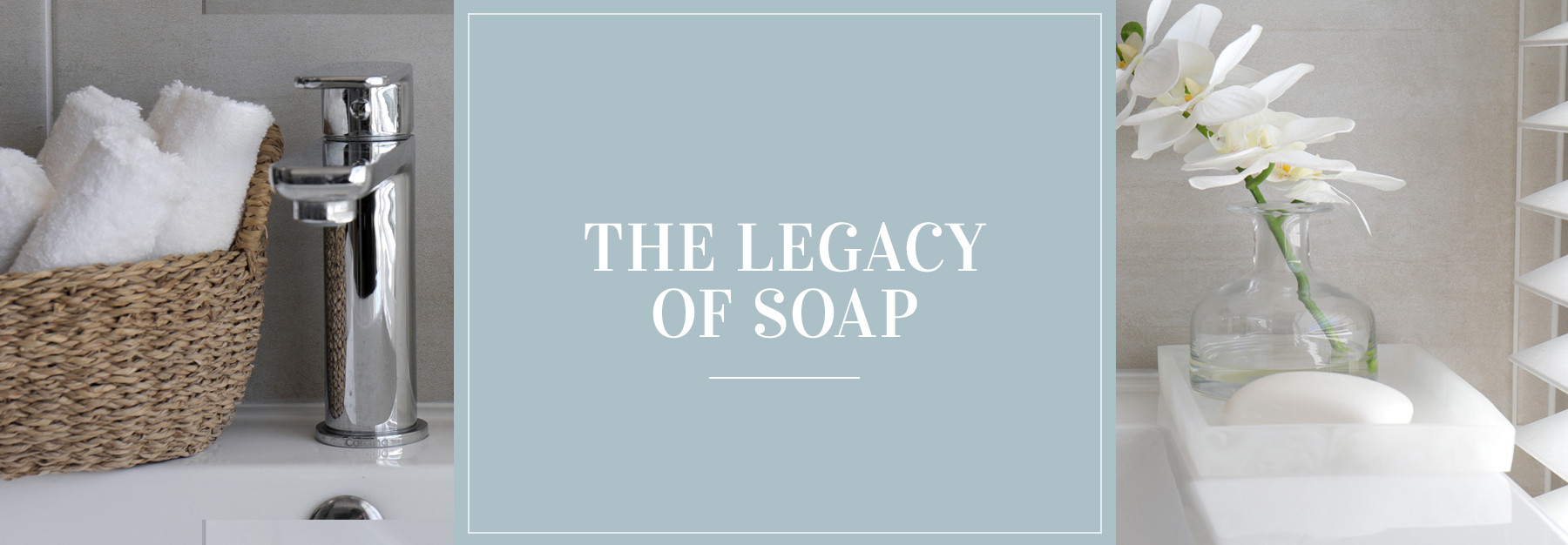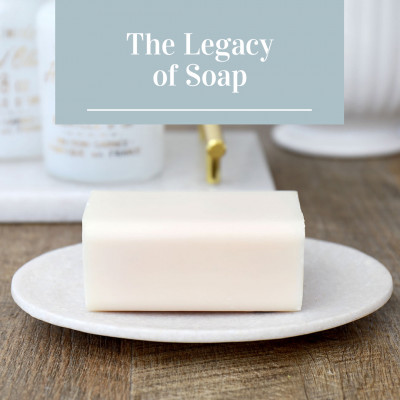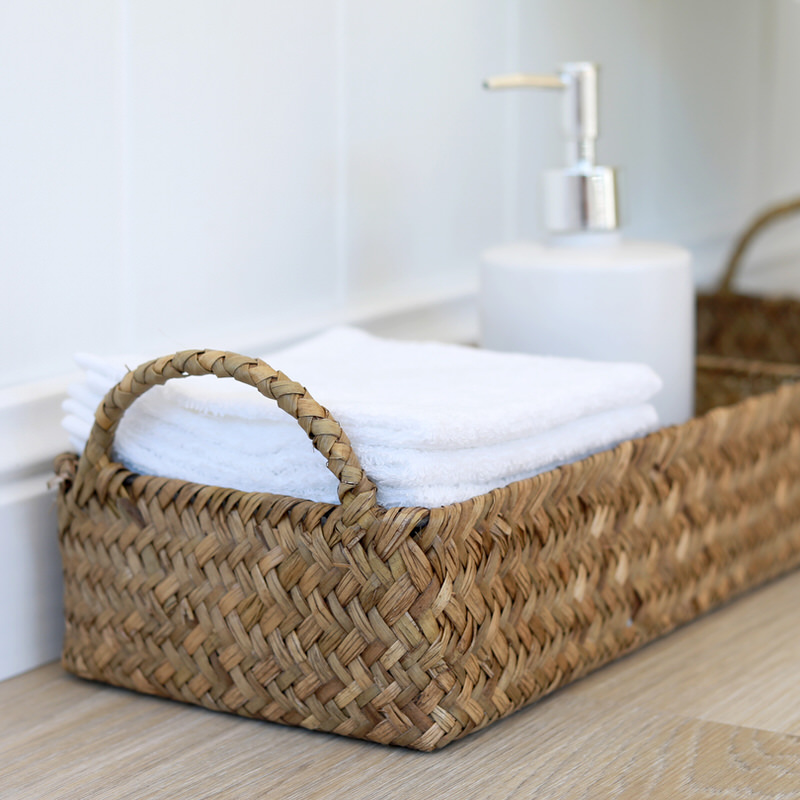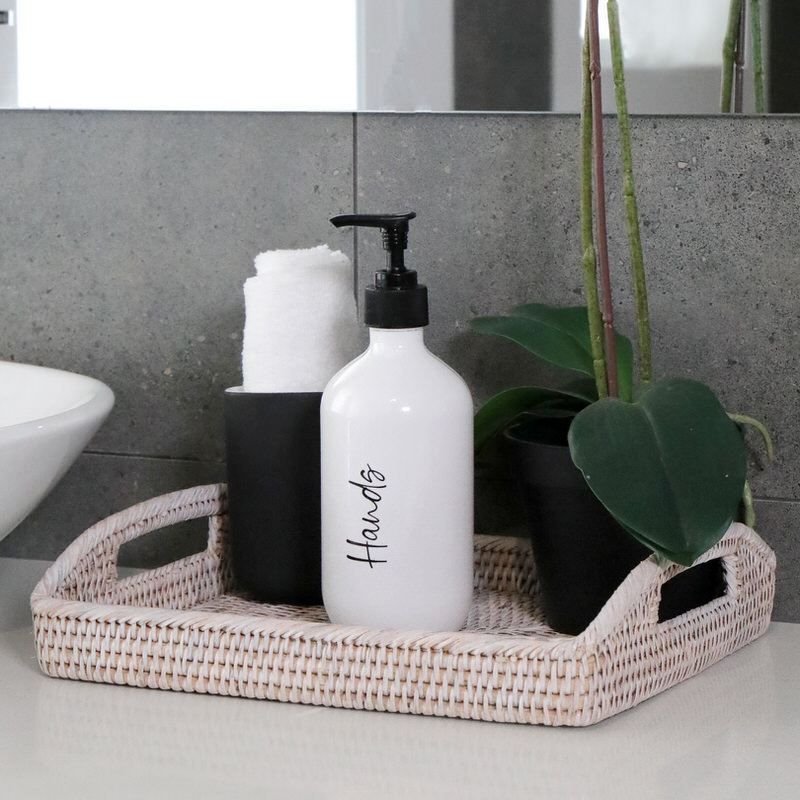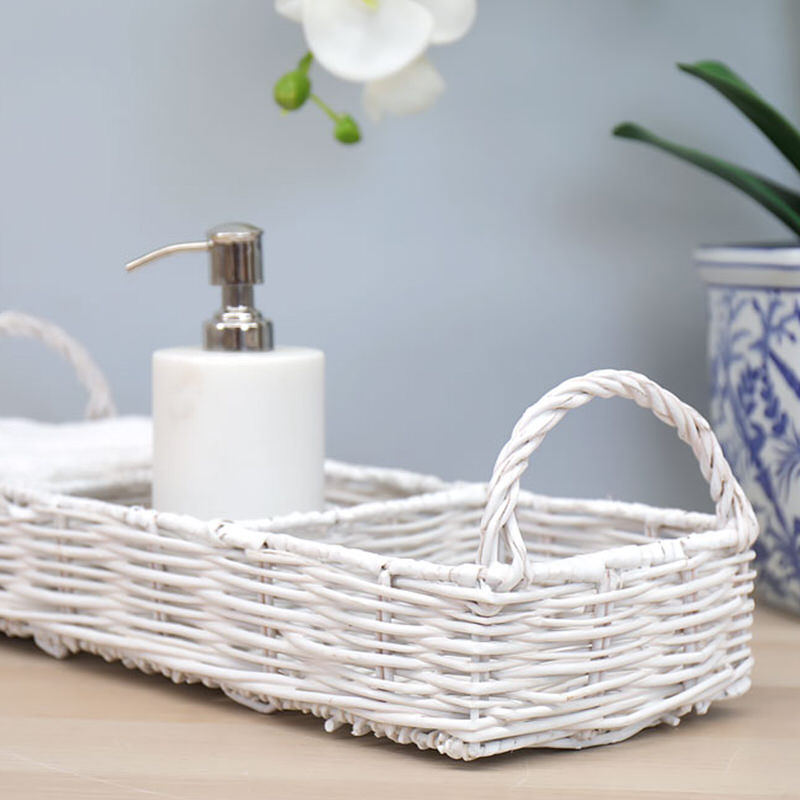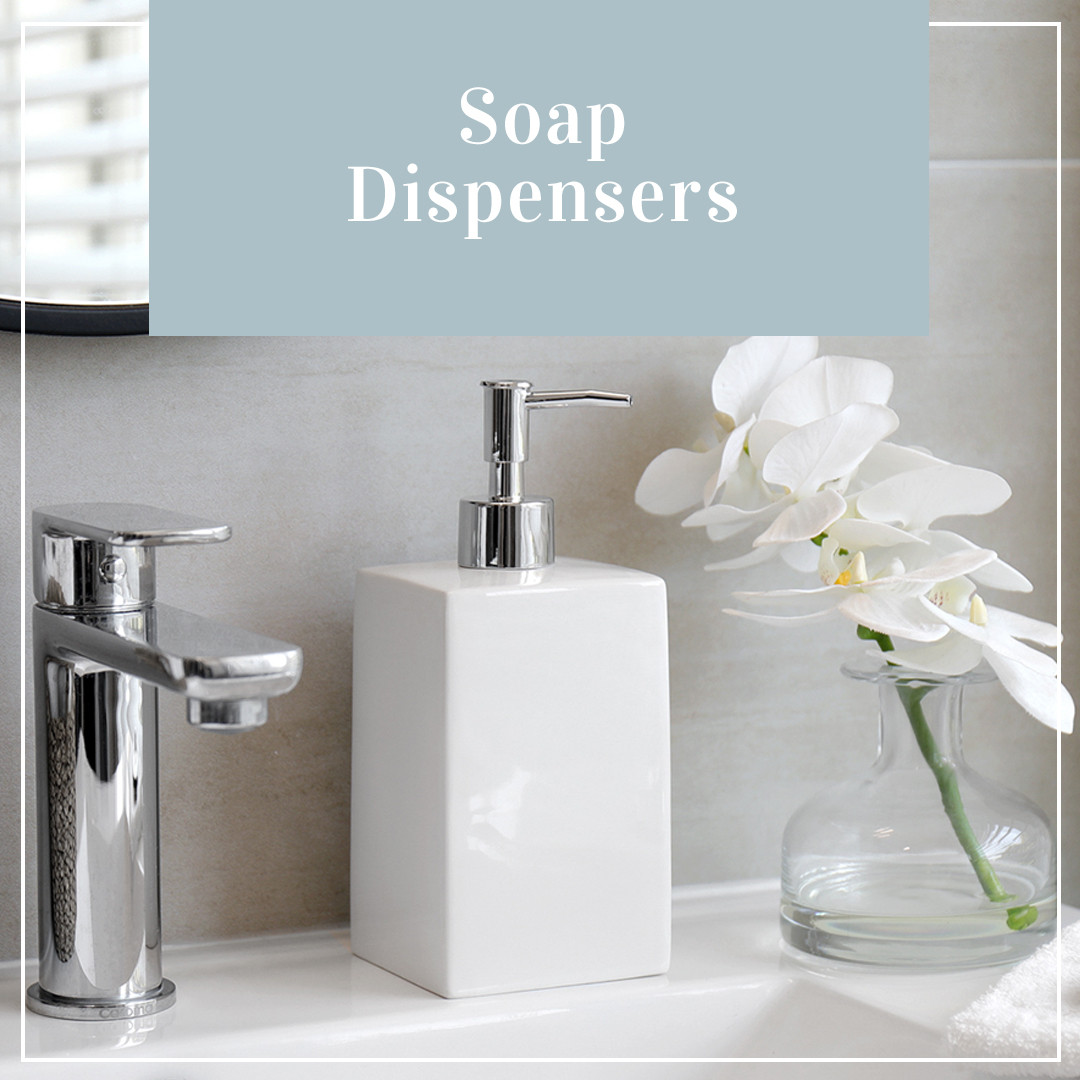The Enduring Legacy of Soap: From Ancient Cleanser to Modern Hygiene Staple with the Creation Of The Soap Dispenser
In the annals of history, few inventions have had as profound and enduring an impact on human health and society as soap. This humble cleanser, with its origins shrouded in the mists of antiquity, has journeyed alongside humanity, evolving from a basic concoction of fats and ashes to the sophisticated and varied formulations we know today.
The story is not just a narrative of hygiene; it's a fascinating tale of science, culture, and innovation that reflects the changing tides of human civilisation.
From the ancient soap-making traditions of Babylon to the introduction of the soap dispenser in modern bathrooms, the evolution of soap mirrors our own advancements in science and society. It's a journey marked by milestones not only in the formulation and production of soap but also in our understanding of health and hygiene. In this article, we invite you to explore the rich tapestry of soap's history, its multifaceted role in our world, and the innovations that continue to redefine what this essential product means to us. Join us as we trace the bubbles back in time, unveiling the story of a product that is as ordinary as it is extraordinary.
The significance of soap extends far beyond its ability to remove dirt and grime. It stands as a sentinel of public health, a symbol of personal care, and a testament to human ingenuity in the perpetual quest for cleanliness and comfort. As we delve into the history of soap, we uncover the layers of its impact on our daily lives and its pivotal role in shaping hygiene practices across cultures and epochs.
I. The Origins of Soap
The journey through the corridors of time is as rich and diverse as the cultures that contributed to its development. The earliest records of soap production trace back to ancient civilizations, where its primary use was not for personal hygiene but for cleaning cooking utensils or goods. The Sumerians, around 3000 BC, are often credited with the invention of soap, formulating a basic mixture of water, alkali, and cassia oil.This rudimentary product served more practical purposes, notably in the textile and wool industries, for cleaning fibres. Ancient Egyptian manuscripts, such as the Ebers Papyrus dating to 1500 BC, also mention the use of similar soap-like materials in the preparation of wool for weaving.
In ancient Rome, the discovery of soap's effectiveness for personal cleanliness was somewhat of an accidental revelation. The Romans initially used it for medicinal purposes, treating skin diseases with a concoction of goat's tallow and wood ash. The legend of soap's discovery on the banks of the Tiber River, where animal fats from sacrificial offerings mixed with wood ashes, highlights its serendipitous origins.The production of soap in the Roman era gradually evolved, with the first documented soap-making factories established in the 1st century AD. These early examples were rudimentary, primarily made from animal fats and vegetable oils mixed with an alkali.As soap made its way through the Middle Ages in Europe, its use became more widespread amongst the populace, despite remaining a luxury item for many due to the high cost of production. The Islamic world played a significant role in refining production techniques, introducing new ingredients such as olive oil, which significantly improved the quality and texture of the end product.
By the 12th century, production had become an established craft in Italy and Spain, spreading gradually to France and England. The industry in these regions was often tightly controlled by guilds, which dictated the methods and quality of soap production.The discovery of the Americas and the subsequent trade routes established with the East opened up new sources of ingredients, further diversifying the types and qualities of soaps available. This period marked the beginning of soap's transition from a luxury item to an everyday necessity, setting the stage for the industrial revolution's impact on soap production.In summary, the origins of soap are a testament to human ingenuity and adaptability. From its humble beginnings as a cleaning agent for textiles and a medicinal remedy, soap has evolved to become an indispensable part of our daily lives. Its history is a fascinating reflection of the economic, social, and technological changes that have shaped our world.
II. The Science Behind The Soap In Your Soap Dispensers
At the heart of soap's ability to clean and disinfect is a simple yet fascinating chemical process. Understanding how it works not only illuminates the genius behind its ancient invention but also underscores its enduring relevance in our daily lives. The basic principle of soap's effectiveness lies in its unique molecular structure, which allows it to attract both water and oil molecules.
The molecules have two distinct parts: a hydrophilic (water-attracting) head and a hydrophobic (water-repelling) tail. When used during washing, the hydrophobic tails of the molecules latch onto oils and grease on the surface being cleaned. Simultaneously, the hydrophilic heads remain attracted to water. As you rinse away the soap, the water molecules drag the soap and the attached oils with them, effectively removing the unwanted substances from the surface.
This dual attraction is what makes soap particularly effective in personal hygiene and cleaning. Without soap, water alone would not be able to remove oils from our skin or from other surfaces because water molecules cannot effectively bind with oil. The soap acts as a mediator, allowing water to remove dirt and oil by forming emulsions that can be easily washed away.The variety of soaps available today, from bars to liquid soap dispensers, each serves specific purposes based on their formulation. For instance, some soaps contain added moisturizers for skin care, while others might have antibacterial properties for enhanced cleaning. Despite these variations, the underlying science of how soap cleans remains the same.
In addition to its cleansing properties, soaps also play a crucial role in preventing the spread of germs and diseases. By mechanically removing pathogens from the skin's surface, regular handwashing with soap and water is one of the most effective ways to stop the transmission of infectious diseases. This is particularly critical in healthcare settings, where hand hygiene is paramount, and in everyday life, especially during flu season or outbreaks of illnesses.Soap's ability to disrupt the membranes of certain bacteria and viruses adds another layer to its effectiveness as a hygienic tool. This action further helps in reducing the microbial load on surfaces and skin, making it an indispensable ally in public health.
III. Cultural Impact of Soap on Society
The story of soap is not merely a tale of hygiene and cleanliness; it's a narrative deeply woven into the fabric of cultures worldwide. Soap has transcended its utilitarian origins to become a symbol of purity, a luxury item, and a catalyst for social change. Its cultural impact over the centuries is a testament to its significance beyond the bathroom shelf.Soap as a Symbol of Purity and Status
In many cultures, soap has long been associated with purity, both physically and spiritually. Ritual cleansing practices in religions around the world have often included the use of soap, underscoring its role in the purification process. Moreover, the ability to own and use soap regularly was once a marker of social status. The luxury soaps of the past, fragranced with exotic spices and oils, were the domain of the aristocracy, signifying wealth and refinement.The Democratization of Soap
The industrial revolution marked a turning point in the cultural narrative of soap. As production scaled up and prices fell, soap became accessible to the masses, democratizing cleanliness. This shift was not just economic but also cultural, as the widespread availability of soap played a role in changing attitudes towards personal hygiene and public health. The emergence of marketing and advertising campaigns around soap further embedded it in the public consciousness, making it an indispensable part of daily life.Soap and the Modern Beauty Industry
The evolution of soap has been closely linked to the rise of the modern beauty industry. From the simple bars of yesteryear to today's vast array of cleansing products, soap has been at the forefront of skincare innovation. Its transformation into a beauty product has been influenced by cultural trends towards self-care and wellness. In this context, soap is not just a cleanser but a skincare essential, with formulations designed to moisturize, exfoliate, and rejuvenate the skin.Sustainable Practices and the Return to Natural Soap
In recent years, there's been a cultural shift towards sustainability and natural products, with soap at the heart of this movement. Artisanal soaps made with organic ingredients and eco-friendly packaging have seen a resurgence, reflecting a broader societal move towards environmental consciousness. This trend is not just about the product itself but a lifestyle choice, signaling a return to simpler, more sustainable ways of living.The Universal Language of Soap
Despite the myriad forms and functions that soap has taken on over the centuries, at its core, it remains a universal symbol of cleanliness and care. Its ability to cut across cultural boundaries and adapt to the needs of different societies is a testament to its enduring relevance. In every lather, rinse, and repeat, soap carries with it centuries of history, innovation, and cultural significance.As we consider the cultural impact of soap on society, it's clear that this humble product does more than just clean. It tells a story of human progress, reflecting our evolving values, innovations, and aspirations. From ancient cleansing rituals to modern sustainability practices, soap continues to play a pivotal role in shaping our world.
IV. The Evolution of the Soap Dispenser: From Novelty to Necessity
The soap dispenser has become an integral part of our hygiene practices, seamlessly fitting into the narrative of soap's historical and cultural journey. This device, which we often take for granted, has its own story of innovation and adaptation, mirroring the evolution of soap itself. From its inception to its current status as a household staple, the soap dispenser has transformed the way we access and use soap, making cleanliness more convenient and effective.
The Birth of the Soap Dispenser
The first soap dispensers were introduced in public washrooms as a hygienic solution to shared soap bars, which were less sanitary and more cumbersome to use. These early models were simple, manually operated devices designed to dispense liquid soap efficiently. Their adoption marked a significant step towards modern hygiene practices, emphasizing the importance of cleanliness in public spaces.
Advancements in Technology
Over the years, soap dispensers have seen numerous technological advancements. The transition from manual to an automatic soap dispenser is one such innovation that has enhanced hygiene standards. Automatic soap dispensers, which dispense soap without the need for physical contact, have become especially valuable in minimizing the spread of germs and infections. This touchless technology reflects our growing understanding of hygiene and the ongoing efforts to create safer, more hygienic environments.
In the Home
While soap dispensers were initially more common in public washrooms and commercial settings, they have increasingly found their place in our homes. The variety of soap dispensers available today is vast, with designs ranging from functional to decorative, catering to different tastes and bathroom aesthetics. This shift not only highlights the importance of hygiene in the home but also the role of the soap dispenser in enhancing the overall bathroom experience.The Role of Soap Dispensers in Promoting Sustainable Practices
Another significant aspect of the soap dispenser's evolution is its contribution to sustainability. Refillable soap dispensers help reduce plastic waste by eliminating the need for single-use soap bottles. This eco-friendly alternative aligns with the growing consumer demand for sustainable products and practices. By encouraging the use of bulk soap refills, soap dispensers play a part in the broader movement towards environmental conservation.
A Future Driven by Innovation
As we look to the future, it's clear that the soap dispenser will continue to evolve, driven by technological innovation and changing consumer needs. Whether through the development of more advanced touchless systems or the integration of smart technology, soap dispensers will remain at the forefront of hygiene and design trends. The journey of the soap dispenser from a novel invention to an essential part of our daily lives is a testament to the ongoing quest for better hygiene solutions. As an extension of soap's rich history, soap dispensers embody the continual innovation that shapes our world, making cleanliness more accessible, efficient, and sustainable.
V. Soap Dispensers: A Modern Convenience
In today's hygiene-conscious world, the soap dispenser has emerged as more than just a bathroom accessory; it's a testament to how far we've come in understanding and prioritizing cleanliness. This seemingly small invention plays a big role in our daily routines, ensuring that we can easily and effectively clean our hands, thereby reducing the spread of germs and illnesses.
The Ubiquity of a Soap Dispenser
Walk into any public bathroom, kitchen, or even a workplace, and you're likely to find a soap dispenser within reach. Their ubiquity is a reflection of our collective commitment to hygiene and health. With designs that range from the sleek and sophisticated to the simple and utilitarian, soap dispensers have become an integral part of our cleanliness rituals, seamlessly blending into the fabric of our lives.
The Versatility of Soap Dispensers
One of the remarkable aspects of soap dispensers is their versatility. Available in various forms, such as wall-mounted units, countertop models, and even automatic versions, soap dispensers cater to a wide range of preferences and needs. This adaptability not only makes them suitable for different settings but also encourages their use, making handwashing a more convenient and appealing practice.
Enhancing Hygiene Practices with a Soap Dispenser
The role of the soap dispenser in enhancing hygiene cannot be overstated. By providing easy access to soap, these devices encourage regular handwashing, a simple yet effective way to prevent the transmission of many infectious diseases. The introduction of touchless soap dispensers has further elevated hygiene practices by minimizing contact with surfaces, thereby reducing the risk of cross-contamination.
Soap Dispensers and Public Health
The importance of the soap dispenser extends into the realm of public health. In settings where hygiene is paramount, such as hospitals, food preparation areas, and schools, soap dispensers are crucial in maintaining a clean and safe environment. Their presence underscores the importance of hand hygiene as a cornerstone of public health initiatives and disease prevention strategies.
VI. The Future of the Soap Dispenser: Innovations on the Horizon
As we continue to navigate through an ever-evolving world, the soap dispenser stands at the cusp of innovation, promising to bring new levels of convenience, hygiene, and sustainability into our daily lives. The journey of the soap dispenser is far from over, with future advancements poised to redefine our interaction with this essential hygiene tool.
Embracing Smart Technology
In an age where technology touches almost every aspect of our lives, soap dispensers are no exception. The integration of smart technology into soap dispensers is set to offer unprecedented features, such as usage tracking, automatic refilling notifications, and even personalized hygiene recommendations. These smart soap dispensers could be connected to our home or workplace networks, providing valuable data to optimize soap usage and improve hygiene practices.
Enhancing Sustainability
Sustainability remains a critical focus for the future development of soap dispensers. Innovations are likely to include eco-friendly materials that reduce plastic waste, such as biodegradable or recyclable components. Moreover, future soap dispensers may feature more efficient dispensing mechanisms to minimize soap waste, contributing to a more sustainable approach to personal hygiene.
The Quest for Better Hygiene
The importance of soap dispensers in promoting better hygiene practices is expected to grow, especially in public and high-traffic areas. The development of more advanced touchless technology will play a key role in preventing the spread of germs and infections. Additionally, the design of soap dispensers may evolve to accommodate a wider range of environments, from hospitals and schools to outdoor public spaces, ensuring that hand hygiene is accessible to all.Personalisation and Aesthetics in Design
As soap dispensers become more integrated into our homes and personal spaces, the demand for customization and aesthetic appeal will increase. Future designs might offer a variety of styles, colours, and finishes to complement different interior designs and personal preferences. The functionality of soap dispensers will merge with decorative art, making them not just practical tools but also elements of home decor.
The Role of Innovation in Soap Dispenser Accessibility
Innovation in soap dispenser design will also focus on making hand hygiene more accessible to everyone, including those with limited mobility or other disabilities. Ergonomic designs, adjustable heights, and voice-activated features are just some of the developments that could make soap dispensers more user-friendly for individuals with diverse needs.
The future of soap dispensers is bright, with potential innovations that promise to enhance our hygiene practices, contribute to environmental sustainability, and cater to our individual needs and preferences. As we look forward to these advancements, it's clear that the humble soap dispenser will continue to play a vital role in our daily lives, evolving alongside our changing world.

